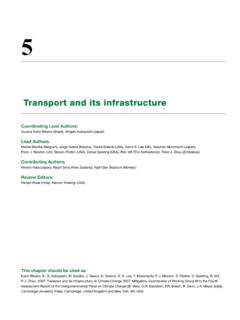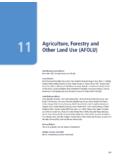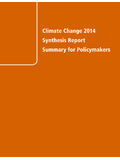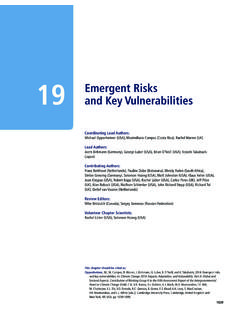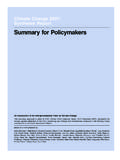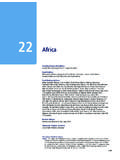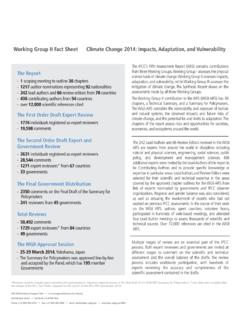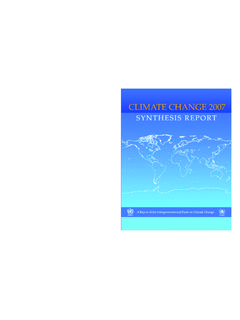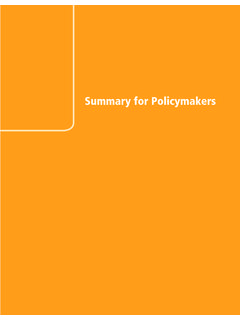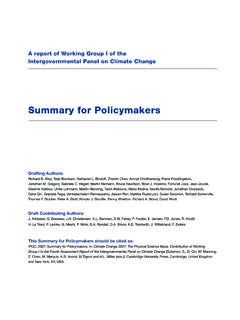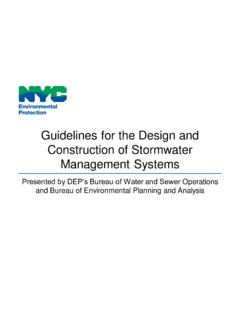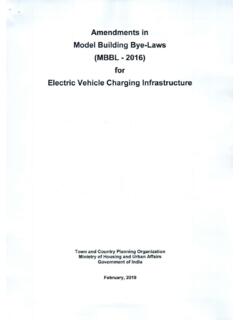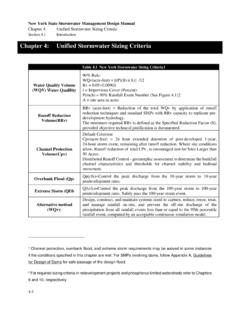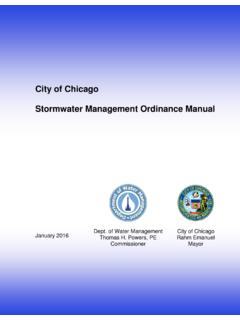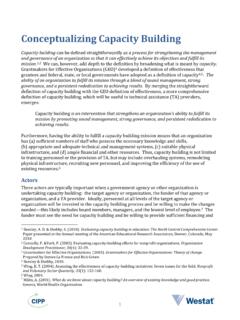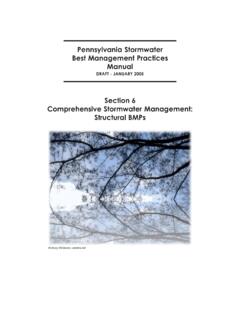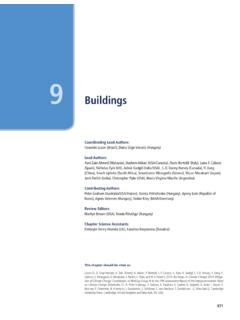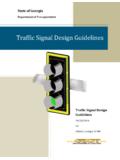Transcription of Transport - Intergovernmental Panel on Climate Change
1 8 Transport Coordinating Lead Authors: Ralph Sims (New Zealand), Roberto Schaeffer (Brazil). Lead Authors: Felix Creutzig (Germany), Xochitl Cruz-N ez (Mexico), Marcio D'Agosto (Brazil), Delia Dimitriu (Romania / UK), Maria Josefina Figueroa Meza (Venezuela / Denmark), Lew Fulton (USA), Shigeki Kobayashi (Japan), Oliver Lah (Germany), Alan McKinnon (UK / Germany), Peter Newman (Australia), Minggao Ouyang (China), James Jay Schauer (USA), Daniel Sperling (USA), Geetam Tiwari (India). Contributing Authors: Adjo A. Amekudzi (USA), Bruno Soares Moreira Cesar Borba (Brazil), Helena Chum (Brazil / USA), Philippe Crist (France / USA), Han Hao (China), Jennifer Helfrich (USA), Thomas Longden (Australia / Italy), Andr Frossard Pereira de Lucena (Brazil), Paul Peeters (Netherlands), Richard Plevin (USA), Steve Plotkin (USA), Robert Sausen (Germany). Review Editors: Elizabeth Deakin (USA), Suzana Kahn Ribeiro (Brazil).
2 chapter Science Assistant: Bruno Soares Moreira Cesar Borba (Brazil). This chapter should be cited as: Sims R., R. Schaeffer, F. Creutzig, X. Cruz-N ez, M. D'Agosto, D. Dimitriu, M. J. Figueroa Meza, L. Fulton, S. Kobayashi, O. Lah, A. McKinnon, P. Newman, M. Ouyang, J. J. Schauer, D. Sperling, and G. Tiwari, 2014: Transport . In: Climate Change 2014: Mitigation of Climate Change . Contribution of Working Group III to the Fifth Assessment Report of the Intergovern- mental Panel on Climate Change [Edenhofer, O., R. Pichs-Madruga, Y. Sokona, E. Farahani, S. Kadner, K. Seyboth, A. Adler, I. Baum, S. Brunner, P. Eickemeier, B. Kriemann, J. Savolainen, S. Schl mer, C. von Stechow, T. Zwickel and Minx (eds.)]. Cambridge University Press, Cambridge, United Kingdom and New York, NY, USA. 599. Transport chapter 8. Contents Executive Summary 603. 8. Freight and passenger Transport (land, air, sea and water) 605.
3 The context for Transport of passengers and freight 606. Energy demands and direct / indirect emissions 608. New developments in emission trends and drivers 610. Trends 611. Non-CO2 greenhouse gas emissions, black carbon, and aerosols 611. Drivers 612. Mitigation technology options, practices and behavioural aspects 613. Energy intensity reduction incremental vehicle technologies 613. Light duty vehicles 613. Heavy-duty vehicles 613. Rail, waterborne craft, and aircraft 614. Energy intensity reduction advanced propulsion systems 614. Road vehicles battery and fuel cell electric-drives 614. Rail, waterborne craft, and aircraft 615. Fuel carbon intensity reduction 615. Comparative analysis 616. Behavioural aspects 616. Infrastructure and systemic perspectives 618. Path dependencies of infrastructure and GHG emission impacts 618. Path dependencies of urban form and mobility 619. Modal shift opportunities for passengers 620.
4 Modal shift opportunities for freight 621. 600. chapter 8 Transport Climate Change feedback and interaction with adaptation 622. Accessibility and feasibility of Transport routes 622. Relocation of production and reconfiguration of global supply chains 622. Fuel combustion and technologies 622 8. Transport infrastructure 623. Costs and potentials 630. Co-benefits, risks and spillovers 630. Socio-economic, environmental, and health effects 633. Technical risks and uncertainties 633. Technological spillovers 633. Barriers and opportunities 633. Barriers and opportunities to reduce GHGs by technologies and practices 633. Financing low-carbon Transport 636. Institutional, cultural, and legal barriers and opportunities 636. Sectoral implications of transformation pathways and s ustainable development 637. Long term stabilization goals integrated and sectoral perspectives 637. Sustainable development 641. Sectoral policies 642.
5 Road Transport 642. Rail Transport 645. Waterborne Transport 645. Aviation 646. Infrastructure and urban planning 647. 601. Transport chapter 8. Gaps in knowledge and data 647. Frequently Asked Questions 647. 8 References 650. Dedication to Lee Schipper This Transport chapter is dedicated to the memory of Leon Jay appointed role as Review Editor. Lee's passing is a great loss to (Lee) Schipper. A leading scientist in the field of energy research the research field of Transport , energy, and the environment and with emphasis on Transport , Lee died on 16 August 2011 at the his expertise and guidance in the course of writing this chapter age of 64. He was a friend and colleague of many of the chapter was sorely missed by the author team, as were his musical tal- authors who were looking forward to working with him in his ents. 602. chapter 8 Transport Executive Summary infrastructure, and modifying roads, airports, ports, and railways to become more attractive for users and minimize travel time and distance.
6 Reducing global Transport greenhouse gas (GHG) emissions will be challenging since the continuing growth in passenger lowering energy intensity (MJ / passenger km or MJ / tonne km) by and freight activity could outweigh all mitigation measures enhancing vehicle and engine performance, using lightweight unless Transport emissions can be strongly decoupled from GDP materials, increasing freight load factors and passenger occupancy 8. growth (high confidence). rates, deploying new technologies such as electric 3-wheelers;. The Transport sector produced GtCO2eq of direct GHG emissions reducing carbon intensity of fuels (CO2eq / MJ) by substituting oil- (including non-CO2 gases) in 2010 and hence was responsible for based products with natural gas, bio-methane, or biofuels, electric- approximately 23 % of total energy-related CO2 emissions ( GtCO2) ity or hydrogen produced from low GHG sources. [ ]. Growth in GHG emissions has continued since the Fourth Assess- ment Report (AR4) in spite of more efficient vehicles (road, rail, water In addition, indirect GHG emissions arise during the construction of craft, and aircraft) and policies being adopted.
7 (robust evidence, high infrastructure, manufacture of vehicles, and provision of fuels (well-to- agreement) [Section , ] tank). (robust evidence, high agreement) [ , , and Chapters 10, 11, 12]. Without aggressive and sustained mitigation policies being imple- mented, Transport emissions could increase at a faster rate than emis- Both short- and long-term Transport mitigation strategies are sions from the other energy end-use sectors and reach around 12 Gt essential if deep GHG reduction ambitions are to be achieved CO2eq / yr by 2050. Transport demand per capita in developing and (high confidence). emerging economies is far lower than in Organisation for Economic Co-operation and Development (OECD) countries but is expected Short-term mitigation measures could overcome barriers to low-car- to increase at a much faster rate in the next decades due to rising bon Transport options and help avoid future lock-in effects resulting, incomes and development of infrastructure.
8 Analyses of both sectoral for example, from the slow turnover of vehicle stock and infrastructure and integrated model scenarios suggest a higher emission reduction and expanding urban sprawl. Changing behaviour of consumers and potential in the Transport sector than the levels found possible in AR4 businesses will likely play an important role but is challenging and the and at lower costs. Since many integrated models do not contain a possible outcomes, including modal shift, are difficult to quantify. Busi- detailed representation of infrastructural and behavioural changes, ness initiatives to decarbonize freight Transport have begun, but need their results for Transport can possibly be interpreted as conserva- support from policies that encourage shifting to low-carbon modes tive. If pricing and other stringent policy options are implemented in such as rail or waterborne options where feasible, and improving logis- all regions, substantial decoupling of Transport GHG emissions from tics.
9 The impact of projected growth in world trade on freight trans- gross domestic product (GDP) growth seems possible. A strong slow- port emissions may be partly offset in the near term by more efficient ing of light-duty vehicle (LDV) travel growth per capita has already vehicles, operational changes, slow steaming' of ships, eco-driving and been observed in several OECD cities suggesting possible saturation. fuel switching. Other short-term mitigation strategies include reducing (medium evidence, medium agreement) [ , , ] aviation contrails and emissions of particulate matter (including black carbon), tropospheric ozone and aerosol precursors (including NOx). Avoided journeys and modal shifts due to behavioural Change , that can have human health and mitigation co-benefits in the short uptake of improved vehicle and engine performance technolo- term. (medium evidence, medium agreement) [ , , , ]. gies, low-carbon fuels, investments in related infrastructure, and changes in the built environment, together offer high miti- Methane-based fuels are already increasing their share for road gation potential (high confidence).
10 Vehicles and waterborne craft. Electricity produced from low-car- bon sources has near-term potential for electric rail and short- to Direct (tank-to-wheel) GHG emissions from passenger and freight medium-term potential as electric buses, light-duty and 2-wheel Transport can be reduced by: road vehicles are deployed. Hydrogen fuels from low-carbon sources constitute longer-term options. Gaseous and liquid-biofuels can pro- avoiding journeys where possible by, for example, densifying vide co-benefits. Their mitigation potential depends on technology urban landscapes, sourcing localized products, internet shopping, advances (particularly advanced drop-in' fuels for aircraft and other restructuring freight logistics systems, and utilizing advanced infor- vehicles) and sustainable feedstocks. (medium evidence, medium mation and communication technologies (ICT); agreement) [ , ]. modal shift to lower-carbon Transport systems encouraged by The technical potential exists to substantially reduce the current CO2eq increasing investment in public Transport , walking and cycling emissions per passenger or tonne kilometre for all modes by 2030.
